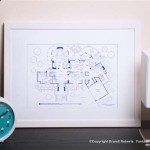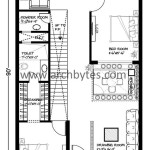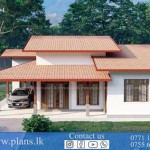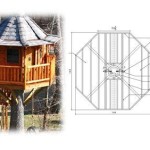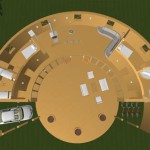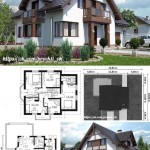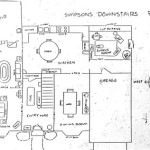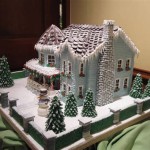```html
Giant Bat House Plans: A Comprehensive Guide
Bat houses are artificial roosts designed to attract bats, offering a safe and secure habitat for these beneficial mammals. Constructing a bat house, particularly a large one, can significantly contribute to local bat populations and provide natural pest control. Giant bat houses, in particular, are designed to accommodate larger colonies, making them ideal for areas where bat populations are robust or where significant benefits from insect control are desired. This article provides a detailed overview of giant bat house plans, encompassing design considerations, construction techniques, placement strategies, and maintenance practices.
Understanding the Benefits of Giant Bat Houses
The primary motivation for erecting a giant bat house is to attract and support a large colony of bats. Bats are vital components of a healthy ecosystem, playing a crucial role in insect control. A single bat can consume thousands of insects in a single night, including mosquitoes, moths, agricultural pests, and other nuisance insects. By providing a suitable roosting habitat, giant bat houses can significantly reduce the need for chemical pesticides, promoting a more sustainable and environmentally friendly approach to pest management. Furthermore, bats are pollinators and seed dispersers, contributing to the health and diversity of plant life. A large bat colony can have a considerable impact on local agriculture and natural habitats.
Beyond ecological benefits, giant bat houses can also serve an educational purpose. They provide opportunities for observation and learning about bats, their behavior, and their importance. Schools, nature centers, and landowners can use bat houses as educational tools to raise awareness about bats and their conservation needs. A flourishing bat colony can be a fascinating and informative attraction, fostering a greater appreciation for wildlife and the interconnectedness of ecosystems.
Giant bat houses are particularly beneficial in areas where natural roosting sites, such as caves and old-growth forests, have been degraded or destroyed. Habitat loss is a major threat to bat populations worldwide. By providing alternative roosting sites, giant bat houses can help mitigate the impact of habitat destruction and support the recovery of bat populations.
Key Design Considerations for Giant Bat Houses
Designing a successful giant bat house requires careful consideration of several key factors. The size of the bat house is paramount. Giant bat houses are typically much larger than single-chamber bat houses, often exceeding 4 feet in width, 4 feet in height, and 2 feet in depth. This larger size allows for multiple chambers, each offering different temperature gradients to accommodate the preferences of different bat species or the changing needs of a single species throughout the year.
The interior of the bat house should be constructed with rough, untreated wood to provide a secure grip for bats. Horizontal roosting surfaces are generally preferred, with spacing between the surfaces ranging from ¾ inch to 1 inch. Varying the spacing slightly can cater to the needs of different bat species. It is crucial to avoid using pressure-treated lumber or wood treated with chemicals, as these can be harmful to bats. Similarly, avoid using smooth surfaces like plywood without adding texture.
Ventilation is another critical aspect of bat house design. Bats require a moderate temperature range, and adequate ventilation helps regulate the temperature inside the bat house, preventing it from overheating during hot weather. Ventilation can be achieved through strategically placed vents at the top and bottom of the bat house. The size and placement of the vents should be adjusted based on the local climate and the orientation of the bat house. In cooler climates, smaller vents may be sufficient, while warmer climates may require larger vents or additional ventilation features.
Entrance design is also important. Bats typically enter bat houses from below, so a wide, unobstructed entrance is essential. The entrance should extend the full width of the bat house and be at least several inches high. Some designs incorporate a landing panel below the entrance to provide a landing area for bats as they approach the bat house.
The exterior of the bat house should be painted or stained a dark color to absorb sunlight and retain heat. Dark brown or black are generally recommended. However, in extremely hot climates, a lighter color may be preferable to prevent overheating. Use only water-based paints or stains that are specifically designed for exterior use and are non-toxic to animals.
Construction Techniques for Giant Bat Houses
Building a giant bat house requires basic carpentry skills and access to appropriate tools and materials. The plans typically call for untreated plywood, framing lumber, exterior-grade screws, and roofing materials. It is crucial to follow the plans carefully and ensure that all measurements are accurate. Inaccurate measurements can result in gaps or inconsistencies that make the bat house less attractive to bats.
The first step is to construct the frame of the bat house, using framing lumber to create a sturdy and durable structure. The frame should be square and level, and all joints should be securely fastened. Once the frame is complete, the exterior panels can be attached, using exterior-grade screws to ensure a waterproof seal. It is important to pre-drill all screw holes to prevent the wood from splitting.
The interior roosting chambers should be constructed with rough, untreated wood. The surfaces should be spaced according to the design specifications, and the edges should be slightly rounded to prevent injury to bats. The roosting surfaces should be securely attached to the frame, using screws or nails.
The roof of the bat house should be waterproof and durable. Asphalt shingles or metal roofing are commonly used. The roof should be properly sloped to prevent water from pooling on the surface. It is also important to ensure that the roof is securely attached to the frame to withstand wind and weather. Seal all gaps and seams to prevent water from entering the bat house.
Once the bat house is assembled, it should be painted or stained with a dark, water-based paint or stain. The paint or stain should be applied evenly and allowed to dry completely before the bat house is installed. Avoid painting the interior of the bat house, as bats prefer the natural texture of the wood.
Placement and Maintenance of Giant Bat Houses
The location of the bat house is crucial for its success. Bat houses should be placed in a location that receives at least six hours of direct sunlight per day. The orientation of the bat house should also be considered. In cooler climates, a south-facing orientation is preferable to maximize sunlight exposure. In warmer climates, an east-facing orientation may be better to avoid overheating.
Bat houses should be mounted at least 12-15 feet above the ground, either on a pole or on the side of a building. Avoid placing bat houses near bright lights, as bats are nocturnal and prefer dark environments. Also, avoid placing bat houses in areas where there is heavy human traffic or disturbance.
Maintenance of bat houses is relatively simple. The bat house should be inspected annually for damage or wear. Loose screws should be tightened, and any damaged panels should be repaired or replaced. The bat house should also be cleaned out every few years to remove accumulated guano. Guano can be a valuable fertilizer, so it can be collected and used in gardens.
It can take time for bats to find and occupy a bat house. Be patient and do not disturb the bat house unnecessarily. If bats do not occupy the bat house within a year or two, try relocating it to a different location. Adding bat attractant to the bat house can also help attract bats.
Success with a bat house is not guaranteed, but with careful planning, design, construction, and placement, it is possible to create a valuable habitat for these beneficial creatures and contribute to their conservation.
```
20 Diy Bat House Plans Insteading

Modèles Et Plans De Dortoirs Neighbourhood Bat Watch
Bat House Plan

Bat Houses Mass Gov

Revenge Of Bat Houses There S More Than One Er Side Hustle School

Bat Houses Formosan Golden S Home

Bat Houses House Plans How To Build A
Building Homes For Bats

37 Free Diy Bat House Plans That Will Attract The Natural Pest Control And Save Their Lives
Building Homes For Bats

